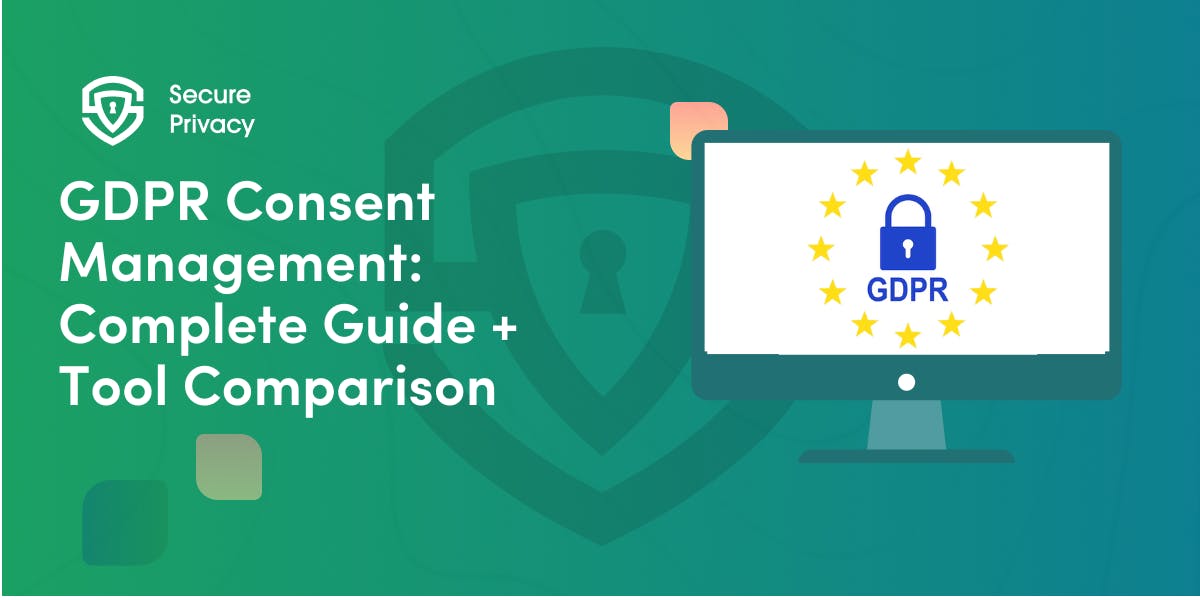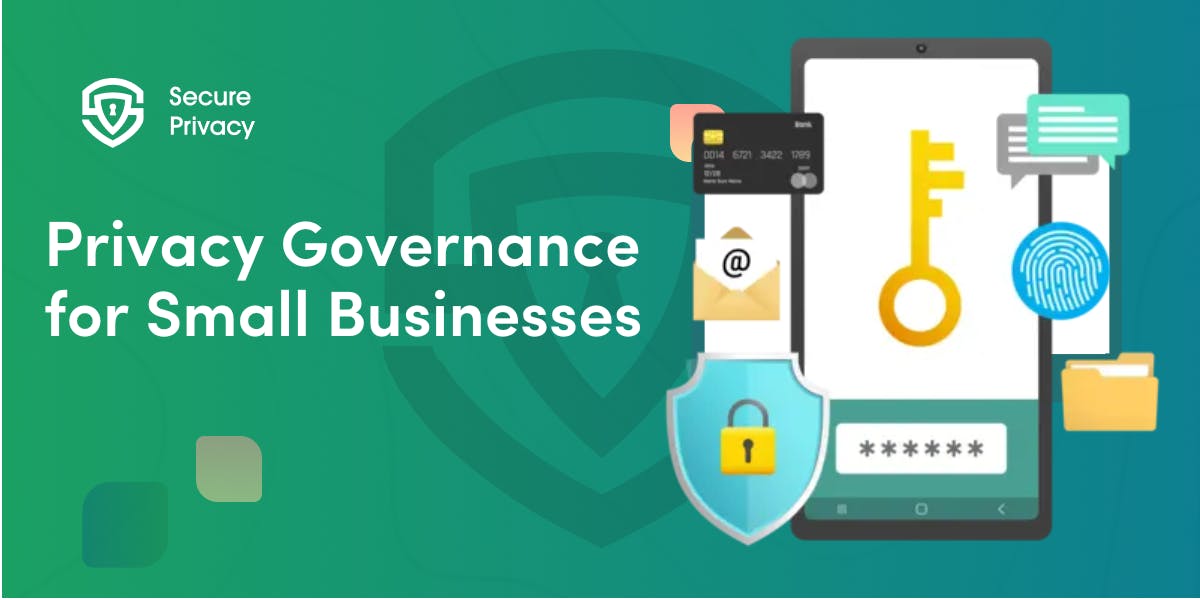Why Privacy by Design & Default is Essential for Modern Businesses
Learn how privacy by design and default can enhance user trust, mitigate data breach risks, and create more efficient systems while balancing business needs and customer expectations.
In summary, it reduces the likelihood of data breaches and penalties, protects your business's growth prospects, and satisfies your customers' data privacy requirements.
Yes, you've probably heard that overregulation can stifle data use and hinder business growth—and in many cases, that's absolutely true.
However, a regulatory concept challenges conventional wisdom by introducing a principle that yields significantly more benefits than drawbacks.
Enter privacy by design and privacy by default.
What is Privacy by Design and Default?
By designing your products, services, and processes to require as little data processing as possible, privacy by design adopts a proactive approach to data privacy.
Instead of collecting data "just in case" you might use it later, this approach encourages designing your business to handle only the data absolutely necessary to provide your products or services. It may sound counterintuitive at first, but you’ll see that it’s a win for both privacy and efficiency.
Privacy by default, on the other hand, ensures that personal data is protected automatically, without the user needing to take any action. In practice, this means complying to principles like purpose limitation, data minimization, and promptly deleting personal data once it’s no longer needed.
Differences Between Privacy by Design and Privacy by Default
To understand better the differences between the two principles, see the following table:
| Aspect | Privacy by Design | Privacy by Default |
|---|
| Definition | A proactive approach to embedding privacy into the design and development of systems, processes, and products from the outset. | Ensures that personal data is protected automatically by default, without requiring user intervention. | |
| Focus | Design and development phase, emphasizing prevention of privacy risks. | Operational phase, emphasizing the default handling of personal data. | |
| Scope | Broad and strategic—applies to the entire system, from conception to lifecycle management. | Specific and operational—concerns the actual settings and configurations in use. | |
| Examples | 1. Designing a secure encryption system for data transfer. 2. Conducting privacy impact assessments during project development. | 1. Defaulting user profiles to private rather than public. 2. Turning off data tracking by default in an app. | |
| Timing | Starts at the beginning of the system's design or project planning and continues throughout its lifecycle. | Applied at the point of deployment and during operational use of the system. | |
| Legal Basis (GDPR) | Article 25(1): Requires organizations to implement privacy measures during design stages. | Article 25(2): Requires default settings that ensure only necessary personal data is processed. | |
| User Role | Reduces the need for user involvement in protecting their privacy by addressing privacy risks upfront. | Removes the need for users to actively change settings to secure their personal data. | |
| Implementation | System architects, designers, and developers embed privacy-enhancing measures in the structure. | Default configurations and operational processes prioritize data minimization and protection. | |
| Outcome | A system inherently built to respect and protect user privacy. | A system or service that protects privacy in its default state. |
To sum it up:
- Privacy by Design lays the groundwork for privacy-respecting systems by embedding privacy principles into their architecture.
- Privacy by Default ensures that these principles are applied in practice, so users’ data is protected automatically without requiring action.
They complement each other, with Privacy by Design being the strategy and Privacy by Default being its operational guarantee.
Examples of Privacy by Design and Default
You’ve heard that every data processing tool collects as much data as possible, and in many cases it is true. However, there are some examples of privacy by design.
- A cloud storage platform includes a feature that automatically deletes unused or archived files after a predefined period, unless the user chooses to retain them. By default, the system minimizes data retention, reducing the risk of unnecessary data exposure, and allows users to override the setting if necessary.
- When analyzing large datasets, a data analytics platform uses differential privacy techniques to prevent the re-identification of individual user data. The tool's core incorporates privacy-preserving algorithms, allowing businesses to gain insights without jeopardizing individual privacy. This design prevents potential misuse or breaches of sensitive data.
- A fitness app collects only the data necessary for its core functionality (e.g., steps taken, calories burned) and avoids collecting sensitive data like geolocation unless absolutely required. App developers design the system during the development phase to request only essential permissions and collect additional data only with explicit user consent.
You see? All of these software solutions function effectively, completing tasks without relying on unnecessary data.
Now onto privacy-by-default examples:
- An e-commerce platform deletes personal data such as browsing history or saved payment details after a set period of inactivity unless the user explicitly chooses to retain it. The platform minimizes data retention risks and ensures compliance with privacy regulations requiring limited data storage.
- An online form only requires essential fields (e.g., name and email address) by default, leaving optional fields (e.g., phone number or demographic data) blank and unrequired. This reduces the risk of unnecessary data collection and aligns with data minimization principles.
- A mobile app disables location tracking and analytics by default and requires users to opt in if they wish to enable these features. In this manner, it safeguards users from needless data gathering and guarantees the acquisition of consent for further processing.
You can feel the presence of privacy by design here, too. Once again, it's evident that we can achieve this without accumulating excessive personal data.
Pros of Privacy by Design and Default
The most obvious benefit of privacy by design and default is compliance with the GDPR and other data protection legislation, but let's set that aside for now and discuss the business benefits. These include:
- User-centric approach. Users are more privacy focused than before. People will appreciate design that protects their privacy.
- Proactive risk mitigation. If you don't store personal data for processing, there is no data to compromise, thereby completely eliminating the risk. And if you only process the bare minimum, the potential impact of a breach becomes significantly smaller.
- Automatic data protection and less work for your customer support. You won’t get support tickets for privacy protection for your users.
- Increased user trust. If you don’t request excessive access to user data, they’ll be more willing to trust you with the information necessary to access your services.
Privacy, whether by design or by default, offers a wonderful side. However, privacy is not without its challenges. There are some arguments against it.
Cons of Privacy by Design and Default
The main argument against privacy by design and by default is that it can stifle innovation by restricting access to personal data that users might not prioritize.
In some cases, this critique holds, especially in data-intensive industries where products excel by leveraging vast amounts of personal information. Take OpenAI’s ChatGPT, for example—can you imagine how it would perform if it hadn’t been trained on such extensive data? Would we have the AI capabilities we benefit from today?
We all know the answer.
Aside from innovation constraints, here are a few other cons of privacy by design and default:
- Difficulty balancing privacy and usability. Implementing strong default privacy settings while maintaining a seamless user experience can be a delicate and resource-intensive process.
- The need to opt in for features they expect by default can lead to user frustration, as some users may find strict default privacy settings inconvenient or annoying. In these cases, default settings may restrict certain features, requiring users to manually adjust configurations for a full experience.
- Designing systems with privacy in mind involves upfront technical and legal expenses, leading to higher initial development costs. Small companies and startups may find this challenging. These costs could potentially reduce the competitiveness of large organizations.
- There are ongoing maintenance costs, as this is not a one-time endeavor. You have to keep going.
Why Privacy by Design and Default Matters for Your Business
Before diving into why privacy by design and default matter for your business, I want to note that you have the freedom to strike a balance between offering users robust privacy features and collecting the data necessary to deliver the services they expect.
Privacy by design and default benefit your business by minimizing the risks of data breaches. Storing personal data makes you a target for malicious actors, creating a risk you should proactively manage. Limiting the collection of personal information not only reduces that risk but also aligns with user expectations and legal requirements under regulations like the GDPR, Saudi PDPL, and other data protection laws.
At the same time, your product must deliver on its promises. If your service depends on personal data, users expect you to collect and process that data responsibly to provide the features they need. This necessity lies outside the scope of privacy by design and default.
Don’t let fear of regulations constrain your innovation. Collect and process data only as necessary for your services, ensure its protection, and refrain from collecting more than necessary—this is the ideal balance.
If you need assistance implementing privacy by design and default in your business, our consultants are here to help. Let us guide you toward a compliant and effective approach.
Get Started For Free with the
#1 Cookie Consent Platform.
No credit card required

GDPR Consent Management: Complete Guide + Tool Comparison
Your website could be costing you €20 million. Every cookie that loads before user consent, every "accept all" button without an equally prominent reject option — these aren't minor oversights. They're violations that data protection authorities are actively hunting.
- Legal & News
- Data Protection

How to Design High-Performing Cookie Banners in 2026
“You're one click away from a €325 million fine”. That's what Google learned in September 2025 when French regulators hit them for cookie consent violations. The message is clear: cookie banner design in 2026 isn't about getting extra clicks anymore — it's about survival.
- Legal & News
- Data Protection

Privacy Governance for Small Businesses: Step-by-Step Guide
You're a 20-person company. A customer asks for their data. Your marketing team just added a new tracking pixel. Your CRM vendor updated their terms. And you just realized you might need to comply with GDPR, CCPA, or both.
- Legal & News
- Data Protection

